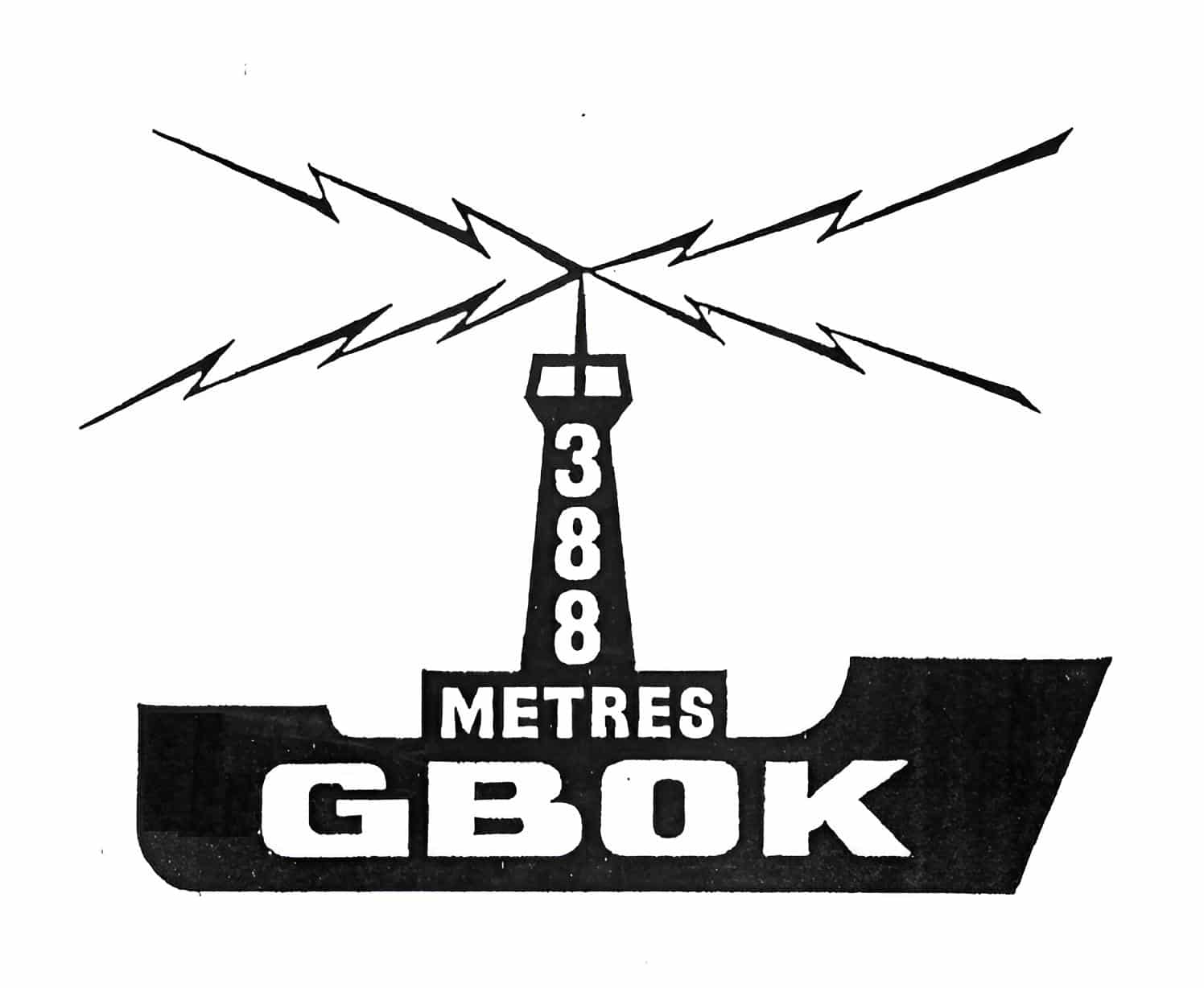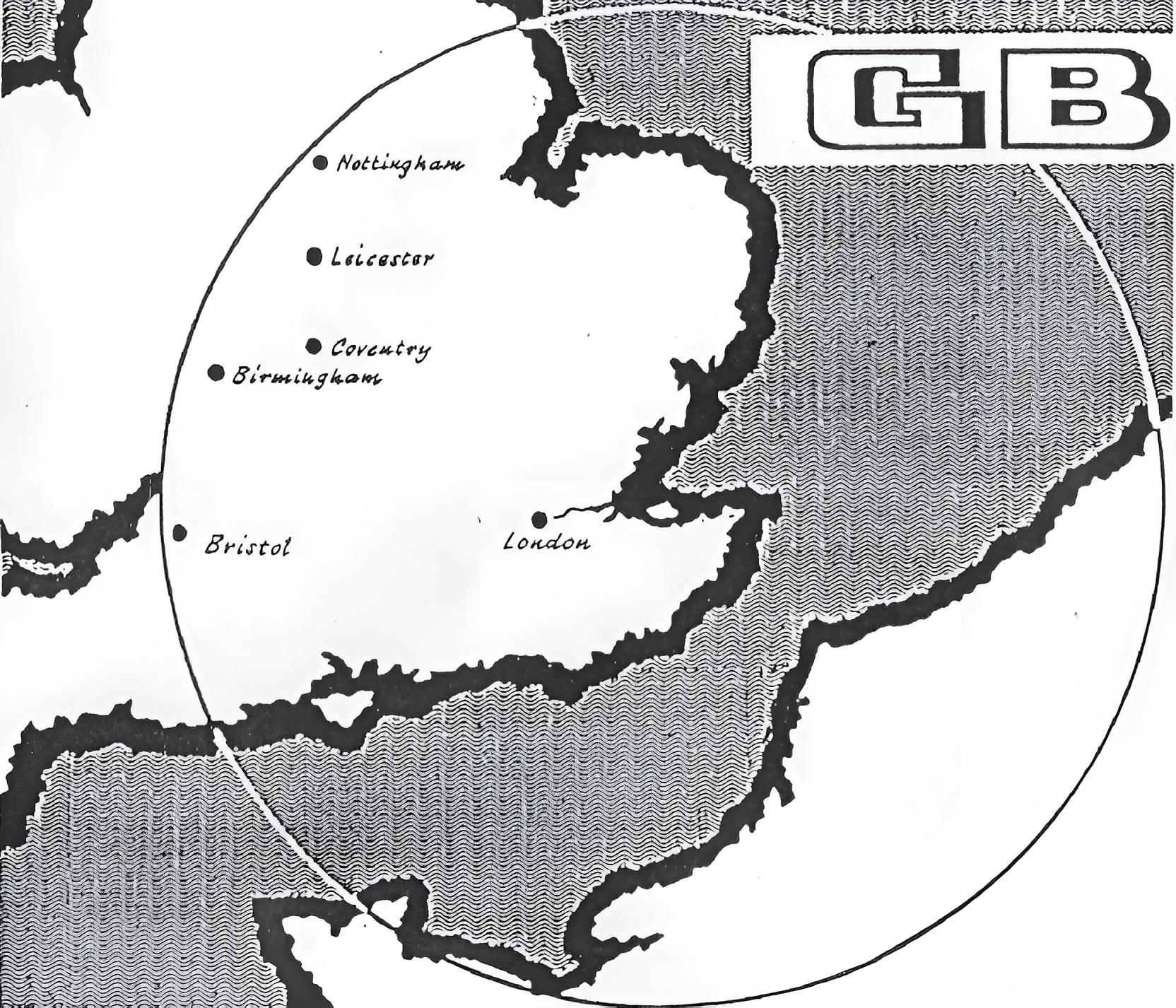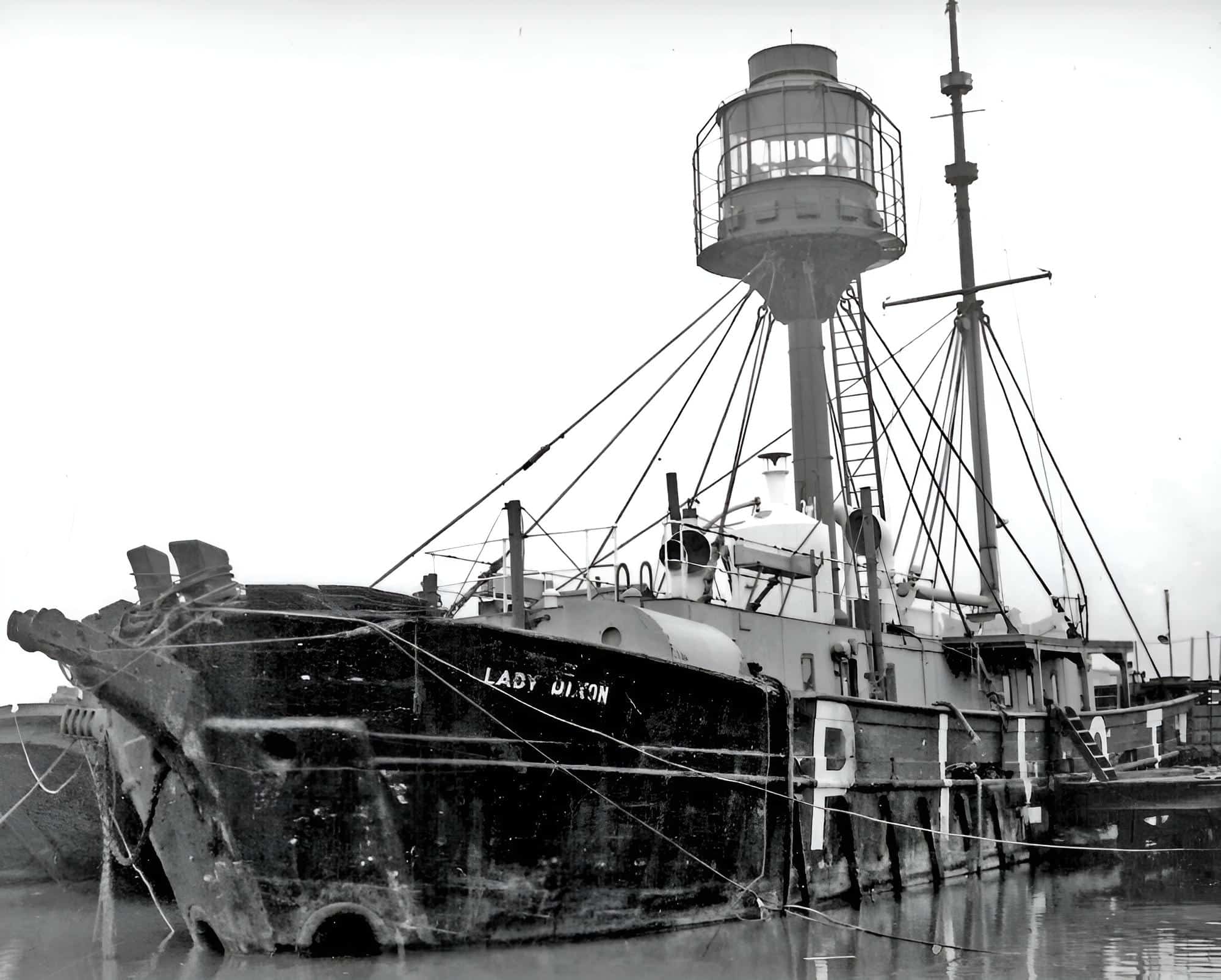Ship details: The Lady Dixon was an ex Commissioners of Irish Lights lightvessel. She was built in 1876/78 by the Victoria Shipbuilding Co., West Passage Cork, Ireland. She was 91 ft long, 21 ft wide and her draft was 11ft. She cost £7.500 to build and served on many Irish stations. Her construction was a composite of teak planking over Iron Frames.
In 1942 she was sold to the Belfast Harbour Commissioners and renamed “Lady Dixon” after the Harbour Masters wife.
Between 1943 and 1959 she was moored off Carrickfergus and was the Belfast “Pilot”.
In March 1961 she was sold to G. A. Lee Ltd, Earl Street Belfast, Northern Ireland.

In October 1961 a Slough, Middlesex, England journalist called John Thompson started a project to organise the first offshore radio station for the UK after hearing of the success of the Scandinavian stations. The station was to commence broadcasts on 1st December 1961.
Arnold Swanson was involved with this project but as Technical Advisor. The Thompson effort did not go forward as quickly as planned and Swanson split from Thompson in January 1962 with backing of £100.000 to start his own station.
Thompson then announced that he had purchased an “84 year old light vessel called Lady Dixon”.
Thompson’s fellow director was Robert Collier, a wholesale newsagent who registered the company as The Voice of Slough at 35, Beechwood Gardens, Slough, England. The station had other names such as GBLN (Great Britain, London) Radio Ellen (after Thompsons wife) and Radio Elb.
Swanson now reappeared on the scene. They fitted out a caravan as a mobile studio to use for outside broadcasts and installed studios in Swanson’s home at Notley Abbey, Thame (this is said to be the former home of Sir Laurence Oliver).

Keith Martin and Ed Moreno worked as DJ’s.
The proposed name for the ship was “Buccaneer” and was to broadcast on 388 Mtrs for 24 hours a day at 8 kW from a position close to the Nore station in the Thames Estuary.
The ship was taken to Pitsea, Essex to be fitted out. Unfortunately she got stuck in the mud there and two tugs were used in an attempt to pull her out but without success.
On March 9th she was freed from the mud and awaited a tow to Sheerness for fitting out. The dates for opening the station now started to slip. On 18th May 1962 it was reported that was ready and just needed a tow to the Nore.

It is believed that the ship was raided in July 1962 by the Post Office and their equipment confiscated.
Swanson had now spent £15.000 on the project and after the raid decided that the old light vessel was un seaworthing. He then went on to start another project using 220 ton Tank Landing craft but nothing was ever heard again about the project.
It is believed that before the “Bon Jour” (Mi Amigo) started broadcasting off the UK coast that she did test transmissions for a “Radio LN” on 306 metres before heading across the Atlantic to Galveston, Texas. Radio LN was another name associated with Swanson and the original project.
It is believed that both O’Rahilly and Alan Crawford were closely watching the progress of the GBOK project to see what happened.
Confusion exists as to the location of “The Lady Dixon” as a very old wreck of a teak hulled light vessel still sits in the mud at Pitsea Creek. However, this is not the “Lady Dixon”. She was moored as a house boat called “Cormorant” near Rochester about 10 years ago and I have included a picture that can be seen at the top of this page. [Story by John S. Platt]

One of John Thompson’s colleagues in the Slough project was a Canadian millionaire, Arnold Swanson. He had reportedly made his fortune from an involvement in the invention of the car seat belt. In early 1962 he announced he was about to launch his own station, to be called GB-OK. This would broadcast from the 84 year old teak lightship Lady Dixon. The station was to transmit on 388 metres. Studios were built (by Roy Barrett) in an out-house at Swanson’s large Buckinghamshire home and a London sales office was set up. Hours of programming were recorded, presented by future offshore DJ Ed Moreno, and a glossy sales brochure was produced. American evangelist Garner Ted Armstrong, whose programme The World Tomorrow was later to be heard on many offshore stations, was said to have bought airtime. Sadly Arnold Swanson’s efforts, like John Thompson’s, came to nothing.
Roy Barrett remembers: “Mr.Swanson persuaded me to go and work for him for double the salary again. He had recently purchased Notley Abbey from Sir Laurence Olivier and Vivien Leigh after their marriage break up. We used one of the bungalows for a studio and offices. I built all the recording studios and interviewed a number of DJs. Swanson bought a Marconi 5 kilowatt transmitter from Z & I Aero Services in London. I never saw it assembled but it was apparently 27 foot in length. Although Swanson was fairly wealthy he ran into some problems with cash and was getting fed up with people ripping him off so, in the end, he decided to call it a day. By this time I had got married and decided to leave.” [Taken from the Pirate Radio Hall Of Fame]
Planned offshore radio station: GBOK in 1961
Planned location: International waters from a position close to the Nore station in the Thames Estuary
Lees ook: “The Voice of Slough” en “Great Britain OK”

